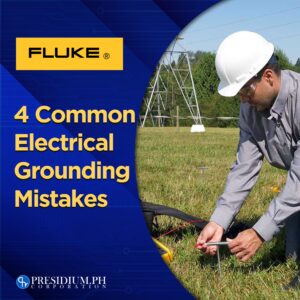Verifying Lockout or Tag out Electrically Safe Status
Lockout or Tag-out procedures indicates steps that electricians must follow to remove power from an electrical circuit or panel to lock out and tag the circuit panel, for no one to re-energize it while there is a work in progress.
This is especially important for the increasing number of specialty contracts, ranging from health inspectors to thermographers that we have today. These contracts must work around electrical panels and exposed circuits, which exposes them to various safety risks. With this, contractors or anyone else who may be exposed to live voltages should, therefore:
- Have a full understanding of lockout/tag-out procedures
- Learn how to verify that power has been removed before they begin any form of work, especially if live circuits may be nearby
Additionally, contractors should also always carry a non-contact voltage detector to confirm and check if their work environment is safe from exposure to live circuits or conductors. Non-contact detectors are relatively affordable and industrial models such as the Fluke 1AC are safety rated up to 1000 volts AC.
About lockout/tag-out
Industry standards like the NFPA 70E, Standard for Electrical Safety in the Workplace, published by the National Fire Protection Association sites Lockout/Tag-out electrical disconnect principles and procedures. Specifically, NFPA 70E requires everyone working on exposed conductors and circuit components operating at 50 volts and up to be properly trained in using lockout/tag-out devices and procedures to ensure their safety. The document also indicates specific circumstances when working on live circuits is permitted and also sets approach boundaries for both qualified and unqualified personnel.
Standard lockout/tag-out process (Conducted by the electrician)
- Open disconnecting device(s) for each source of power supply.
- Visually verify that all blades of the disconnecting devices are fully open or that circuit breaker is in the fully disconnected position
- Use a voltage detector to verify that the circuit/panel is de-energized
Verifying lockout/tag out (Conducted by the non-electrician)
- Visually verify that applied lockout/tag-out devices were applied by the electrician in accordance with a documented and established policy and that he/she has declared the area or equipment electrically safe.
- Test your voltage detector on a known live circuit to make sure that it’s working
- Use your voltage detector to test the surrounding equipment cabinets and circuit panels (covers, not wiring) to ensure that everything is de-energized or grounded
Only after the area has been declared electrically safe should you:
Test each phase conductor or circuit breaker for the absence of voltage. The wand should read no live electricity on each test.
After each test, re-check the voltage detector wand on the known live circuit. It is essential to note that you can only begin work once you’ve completely verified the absence of voltage in the area to ensure safety.
Contact us for more info!



